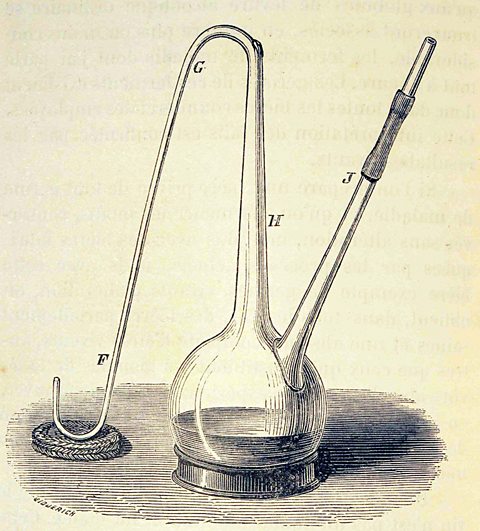Louis Pasteur and germ theory
In the 19th century, Louis Pasteur made a revolutionaryBringing about a complete or radical change. discovery that led to changes in all areas of medicine.
Spontaneous generation
Some people still believed in the harmful effects of miasmaSmells from decomposing material, such as animal and human waste, that were thought to cause disease. or вҖҳbad airвҖҷ, even in the 18th century. However, this theory was rapidly becoming less convincing. Instead, scientists developed the theory of spontaneous generation. Improved microscopeA device used to enlarge tiny objects that cannot be seen by the naked eye. meant that scientists could see microbeMicroscopically small organism, such as a bacterium or single-celled fungus. Also called a microorganism. Scientists observed that microbes appeared on things that had started to rot and believed that they were the product of decay.
The discovery of germs and pasteurisation
Louis Pasteur was a French scientist who specialised in chemistry and microbiology. While working at a university in Lille, he spoke with a brewer, who wanted to know more about why the drinks he made sometimes went sour. PasteurвҖҷs experiments brought greater understanding of the process of fermentation The breakdown of a substance, caused by yeast, bacteria or other microorganisms. and how to prevent it. Prevention was achieved by heating the liquid to a certain temperature, which would kill bacteriaSingle-celled microorganisms, some of which are pathogenic in humans, animals and plants. Singular is bacterium. in the liquid and thereby stop it from going bad. This process became known as pasteurisation.

Pasteur used microscopes and other instruments in his work. The swan neck flask helped him to understand more about the role of bacteria - a type of microbeMicroscopically small organism, such as a bacterium or single-celled fungus. Also called a microorganism. - in fermentation. When air entered the long neck, tiny particles (bacteria) were trapped in the long tube. If they could not reach the liquid, no souring took place. When the flask was tipped and the particles were able to reach the liquid, it would turn sour.
PasteurвҖҷs findings significantly challenged the idea of spontaneous generation and he published his germ theory in 1861. Pasteur argued that bacteria were the cause of disease, but he was not able to identify the specific bacteria that caused individual diseases.
The influence of PasteurвҖҷs germ theory
PasteurвҖҷs ideas were not accepted in Britain straight away and many people continued to believe in the idea of spontaneous generation. However, there were some scientists who continued to research the link between bacteria and disease.
Joseph Lister, a surgeon, read PasteurвҖҷs ideas and began to make links between bacteria and infectionThe invasion and growth of germs in the body. in surgery. However, Lister faced challenges proving his ideas. microscopeA device used to enlarge tiny objects that cannot be seen by the naked eye. had become more advanced and it was possible to see bacteria using them. However, it was difficult to separate the bacteria that were causing infection from those already present.